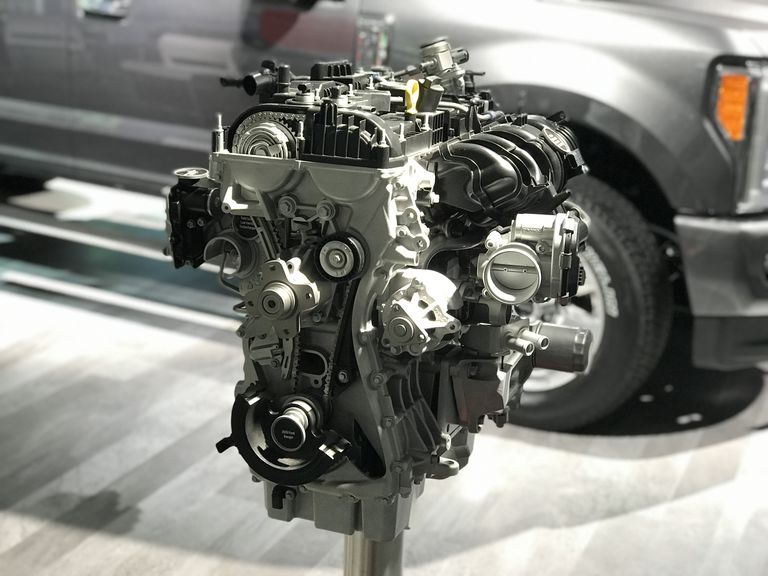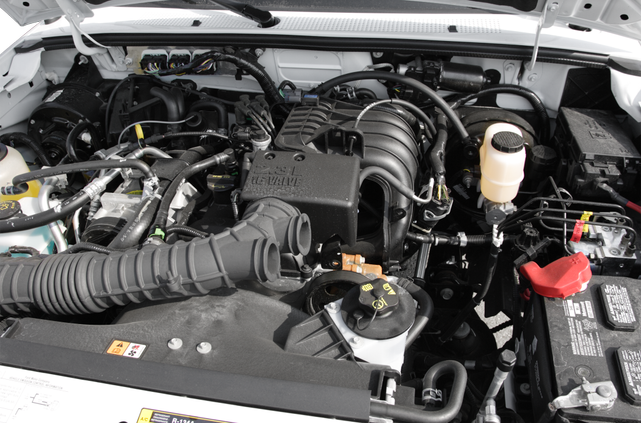Recognizing the Basics of Automobile Engines: Types, functions, and features

Summary of Car Engines
An automobile engine acts as the heart of a car, transforming gas into mechanical power to drive it forward. This elaborate system makes up various elements that operate in unison to guarantee optimum performance and performance. The fundamental operation of an automobile engine involves the internal burning procedure, wherein fuel and air are combined, ignited, and eliminated to develop power.
The engine's layout can significantly impact its performance, fuel effectiveness, and exhausts. Trick parts consist of the cyndrical tube block, pistons, crankshaft, and camshaft, each playing a vital duty in the engine's total function.
In enhancement to these parts, engines frequently use different systems such as gas shot, ignition, and cooling systems to improve performance and long life. Recognizing the basic technicians of vehicle engines is necessary for diagnosing problems and executing maintenance, ultimately adding to the car's dependability and performance gradually.

Types of Vehicle Engines
Vehicle engines can be categorized right into a number of types based upon their style, fuel type, and functional principles. 2.2 ford ranger engine. The most common categories consist of inner combustion engines (ICE), electrical engines, and crossbreed engines
Inner burning engines, which can be more separated into gasoline and diesel engines, run by firing up a fuel-air mixture to generate power. Gas engines are usually lighter and smoother, while diesel engines are extra fuel-efficient and offer greater torque.
Electric engines make use of electrical energy saved in batteries to power an electric motor, offering instantaneous torque and absolutely no exhausts during procedure. As innovation advances, electrical cars (EVs) are increasingly ending up being prominent for their environmental advantages and lower running costs.
Crossbreed engines combine components of both interior burning and electric engines, permitting flexible power resources and improved gas efficiency. They can run in various settings, using either the fuel engine, the electric motor, or both simultaneously.
Each kind of engine has distinctive benefits and disadvantages, affecting their application in different automobile kinds and market segments, from compact vehicles to durable trucks. Comprehending these kinds is essential for making notified choices pertaining to vehicle option and efficiency assumptions.
Engine Features Discussed
Recognizing engine features is critical for understanding exactly how cars run successfully. At the core of any kind of inner burning engine exists the essential procedure of converting fuel right into mechanical power.
The ignition takes place next, sparking the combination and developing a rapid development of gases. This pressure drives the piston down throughout the power stroke, which eventually equates into the rotational movement of the crankshaft. The exhaust stroke after that eliminates the invested gases from the chamber, making method for a brand-new cycle to begin.
In addition to these primary features, engines likewise integrate systems that take care of cooling and lubrication, guaranteeing optimal functional temperatures and decreasing friction in between relocating parts. This elaborate interaction of features enables the engine to produce the power essential for lorry propulsion while keeping effectiveness and dependability. Understanding these features supplies useful insight right into the intricacies of automobile engineering and boosts the capability to diagnose and attend to engine-related issues efficiently.
Key Engine Attributes
Engine design encompasses a number of key attributes that dramatically influence longevity, efficiency, and performance. One of one of the most vital facets is the engine configuration, that includes inline, V-type, and level designs. Each setup influences the engine's balance, dimension, and power outcome, consequently impacting overall automobile characteristics.
Another vital attribute is the engine displacement, referring to the overall quantity of all cyndrical tubes. Bigger displacements generally yield more power but may jeopardize gas performance. Engine products also play a pivotal role; lightweight and high-strength products, such as light weight aluminum and magnesium alloys, boost efficiency without including too much weight.
The kind of gas shot system utilized-- such as straight or multi-port shot-- affects burning efficiency and emissions. Turbo charging and turbocharging are functions that improve engine efficiency forcibly added air into the burning chamber, enhancing power result without dramatically boosting engine size.
Last but not least, the existence of advanced engine administration systems maximizes fuel-air check my reference mixture and ignition timing, adding to smoother operation and better fuel economic climate. Jointly, these features specify an engine's abilities, establishing the structure for its efficiency and durability in an affordable automotive landscape.
Maintenance Tips for Engines
Proper engine upkeep is important for ensuring optimum performance and long life, as disregarding regular treatment can cause significant concerns down the line. To keep your engine properly, this article begin with regular oil adjustments, generally every 3,000 to 7,500 miles, relying on the sort of oil made use of. Fresh oil lubricates engine parts, minimizing friction and wear.
In addition, checking coolant levels is essential to stop overheating. Make sure that the coolant is topped up and remains in good problem to maintain efficient temperature guideline. Consistently replace and evaluate air and fuel filters, as clogged up filters can impede air movement and fuel distribution, jeopardizing engine performance.
In addition, take notice of ignition system and ignition systems. Defective or worn ignition system can result in misfiring and decreased efficiency. Checking the battery terminals and connections for deterioration is also crucial, as a weak battery can affect engine beginning.

Verdict
In summary, a comprehensive understanding of auto engines incorporates different types, features, and key functions that significantly affect vehicle efficiency. Inner burning engines, in addition to electrical and hybrid options, demonstrate diverse mechanisms for energy conversion. 2.2 ford ranger engine. Recognizing the important functions, such as intake and exhaust cycles, alongside crucial engine features like setup and fuel injection systems, equips vehicle owners with the expertise essential for efficient maintenance and operation, ultimately enhancing lorry long life and performance
A car engine offers as the heart of an automobile, converting gas right into mechanical power to move it forward. The fundamental procedure of a car engine entails the interior combustion procedure, where gas and air are blended, ignited, and expelled to produce power.
On a regular basis check and replace air and gas filters, as clogged filters can prevent air flow and gas shipment, compromising engine effectiveness. - 2.2 ford ranger engine
In summary, a thorough understanding of automobile engines incorporates various kinds, functions, and crucial features that substantially influence automobile performance. Acknowledging the essential functions, such as consumption and exhaust cycles, together with essential engine functions like arrangement and fuel shot systems, equips automobile proprietors with the understanding essential for effective upkeep and procedure, eventually boosting vehicle durability and performance.